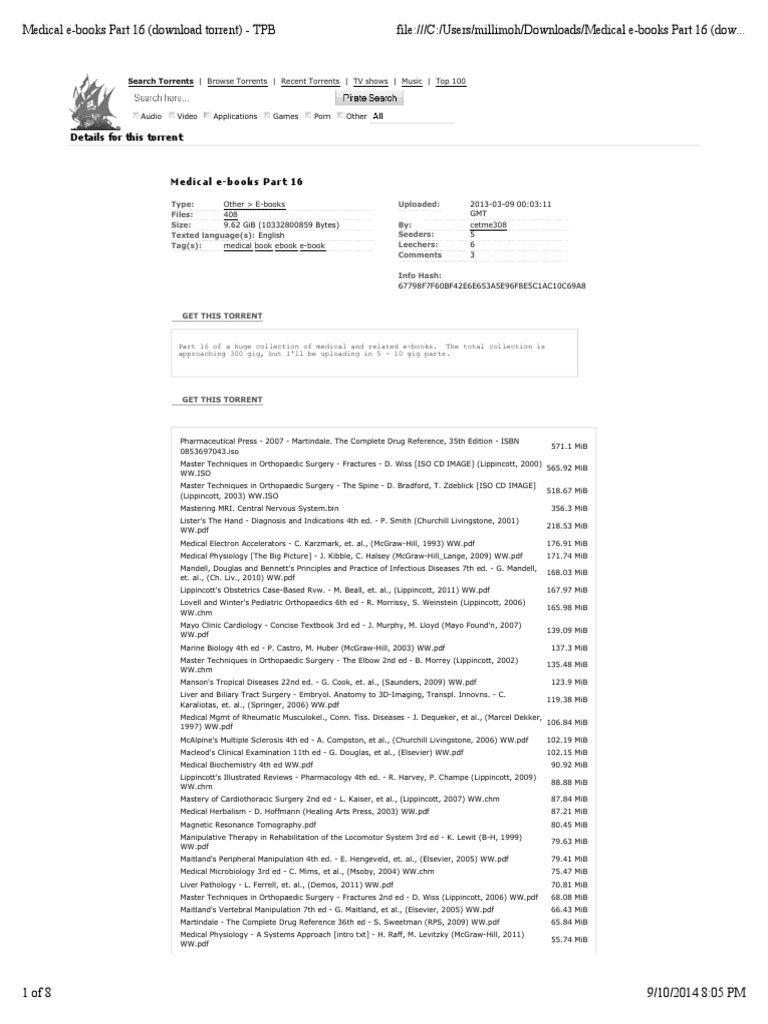Principles And Practice Using C Pdf Torrent
Posted : adminOn 3/7/2018Environmental Hydrology Third Edition Document about Environmental Hydrology Third Edition is available on print and digital edition. This pdf ebook is one of digital. Jul 19, 2017. Forecasting: principles and practice. This textbook is intended to provide a comprehensive introduction to forecasting methods and to present enough information about each method for readers to be able to use them sensibly. We don't attempt to give a thorough discussion of the theoretical details behind. Donor challenge: A generous supporter will match your donation 3 to 1 right now. $5 becomes $20! Dear Internet Archive Supporter. I ask only once a year: please help the Internet Archive today. We're an independent, non-profit website that the entire world depends on. Our work is powered by donations averaging about.

Adobe Flash Player is required to view this feature. If you are using an operating system that does not support Flash, we are working to bring you alternative formats. Original Article First-Trimester or Second-Trimester Screening, or Both, for Down's Syndrome Fergal D. Malone, M.D., Jacob A. Canick, Ph.D., Robert H. Ball, M.D., David A.
Nyberg, M.D., Christine H. Comstock, M.D., Radek Bukowski, M.D., Richard L.
Berkowitz, M.D., Susan J. Gross, M.D., Lorraine Dugoff, M.D., Sabrina D. Craigo, M.D., Ilan E. Timor-Tritsch, M.D., Stephen R. Carr, M.D., Honor M.
Books: Freely available programming books. Contribute to free-programming-books development by creating an account on GitHub.
Wolfe, M.D., Kimberly Dukes, Ph.D., Diana W. Bianchi, M.D., Alicja R. Rudnicka, Ph.D., Allan K. Hackshaw, M.Sc., Geralyn Lambert-Messerlian, Ph.D., Nicholas J. Wald, F.R.C.P., and Mary E.
D'Alton, M.D., for the First- and Second-Trimester Evaluation of Risk (FASTER) Research Consortium N Engl J Med 2005; 353:2001-2011 DOI: 10.1056/NEJMoa043693. Methods Women with singleton pregnancies underwent first-trimester combined screening (measurement of nuchal translucency, pregnancy-associated plasma protein A [PAPP-A], and the free beta subunit of human chorionic gonadotropin at 10 weeks 3 days through 13 weeks 6 days of gestation) and second-trimester quadruple screening (measurement of alpha-fetoprotein, total human chorionic gonadotropin, unconjugated estriol, and inhibin A at 15 through 18 weeks of gestation).
We compared the results of stepwise sequential screening (risk results provided after each test), fully integrated screening (single risk result provided), and serum integrated screening (identical to fully integrated screening, but without nuchal translucency). Results First-trimester screening was performed in 38,167 patients; 117 had a fetus with Down's syndrome. At a 5 percent false positive rate, the rates of detection of Down's syndrome were as follows: with first-trimester combined screening, 87 percent, 85 percent, and 82 percent for measurements performed at 11, 12, and 13 weeks, respectively; with second-trimester quadruple screening, 81 percent; with stepwise sequential screening, 95 percent; with serum integrated screening, 88 percent; and with fully integrated screening with first-trimester measurements performed at 11 weeks, 96 percent. Paired comparisons found significant differences between the tests, except for the comparison between serum integrated screening and combined screening. First-trimester screening for Down's syndrome that includes the use of ultrasonography to assess nuchal translucency has become widespread since its introduction by Nicolaides and colleagues in the early 1990s. The largest U.S. Study of first-trimester screening to date, involving 8514 pregnancies, reported a 79 percent detection rate at a 5 percent false positive rate.
Second-trimester screening remains the most common approach to assessing the risk of Down's syndrome in the United States. At War With Self Torn Between Dimensions Rar Download. When inhibin A is included in second-trimester quadruple screening, the estimated detection rate for Down's syndrome is 81 percent with a 5 percent false positive rate. However, little information is available on the comparative performance of these first- and second-trimester approaches. More complex options for risk assessment have also become available, including sequential screening (performance of screening tests at different times during pregnancy, with the results provided to the patient after each test) and integrated screening (performance of screening tests at different times during pregnancy, with a single result provided to the patient only after all tests have been completed). Accurate comparison of the performance of different screening tests conducted at different times during pregnancy remains complex because of the bias that can arise from spontaneous pregnancy losses that may occur between the first-trimester and the second-trimester screenings.